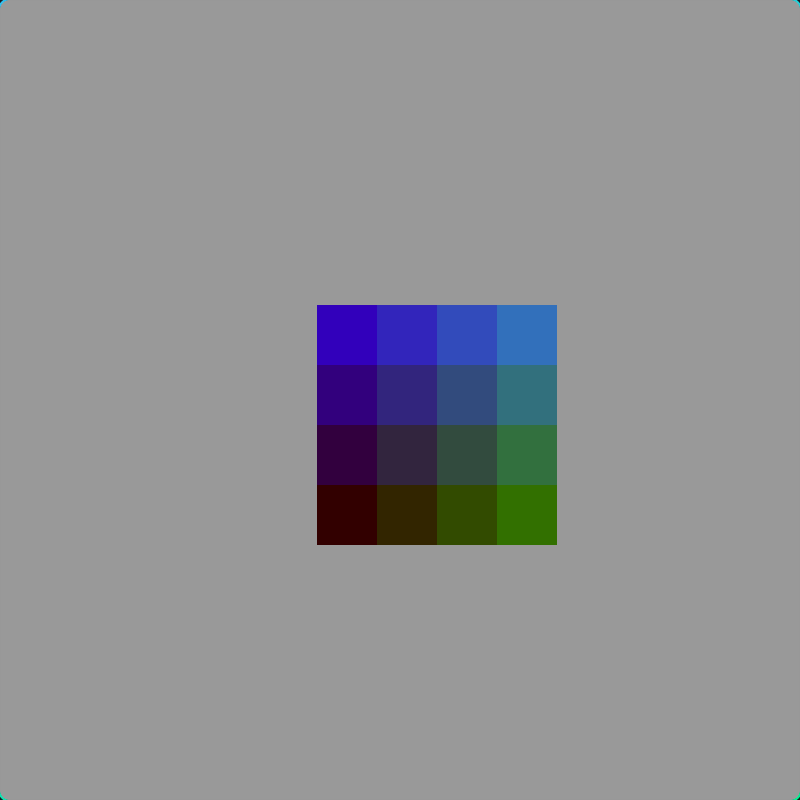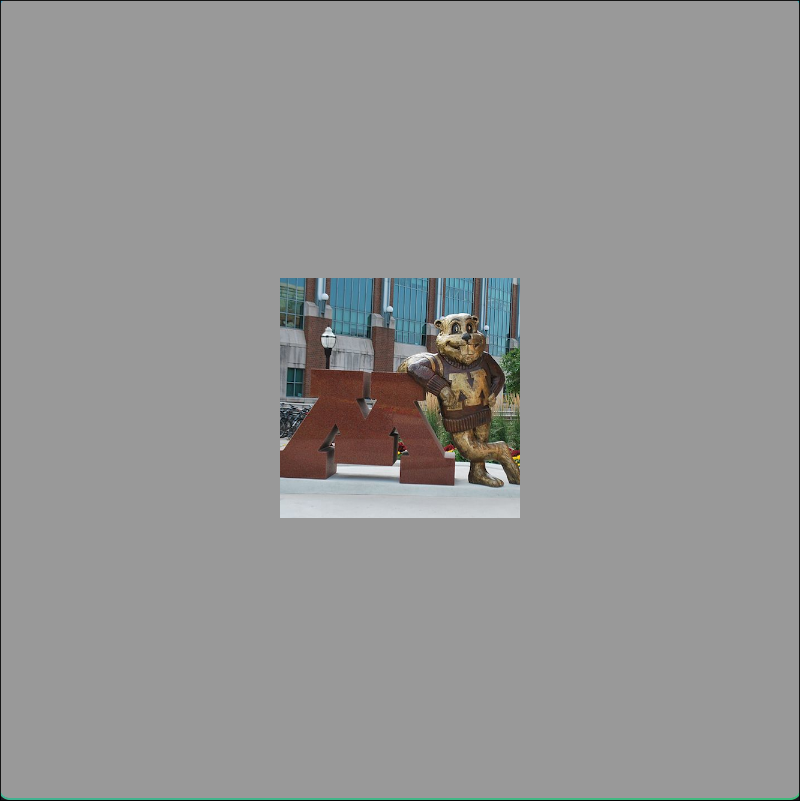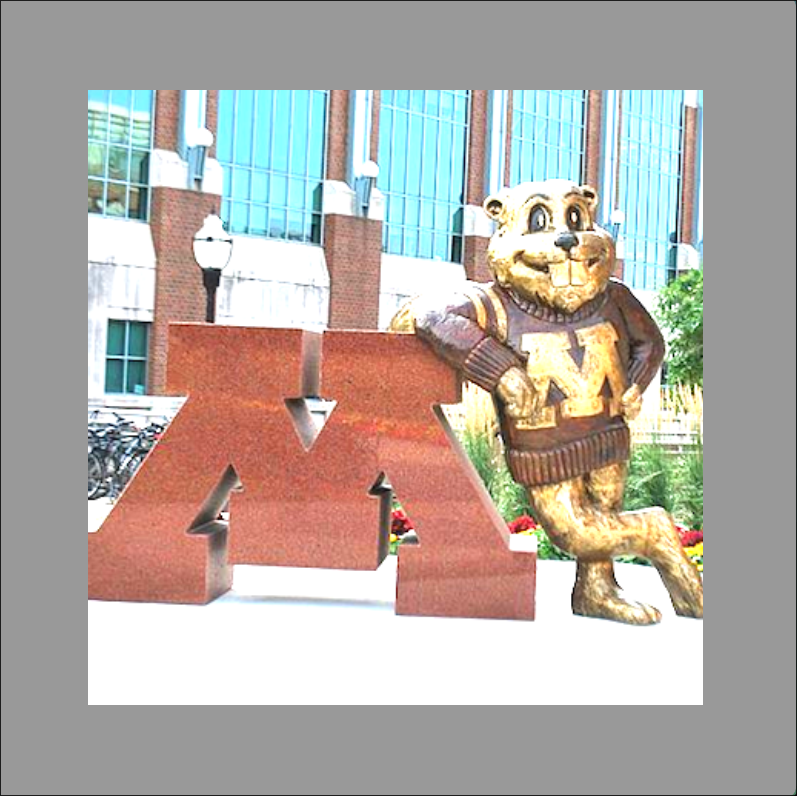The first step in this Assignment was to compile the project. Installing the requried packages was super easy, the latest packages were available through arch linux’s pacman repository via a single command:
sudo pacman -S sdl3 mesa
That’s it, I know people with debian systems were struggling with installing sdl3, I think this displays why arch is the superior distro :P.
Compiling was a breeze, it was one command:
g++ squareStarter.cpp glad/glad.c -lSDL3 -lGL -ldl -o square
Running my new square program I found: 
The code compiled and displayed a colorful square that can be translated by dragging anywhere in the window.
Now for the hard part… I have to:
- Translate only when the user drags on the square’s interior (but not on the edge or outside the square)
- Rotate the square when the user drags on the edges
- Scale the square when the user drags on the corners
- Texture the square with an image loaded from a PPM file
- Significantly brighten the image on the square (without distorting the colors)
- Reset the square’s position, scale, and orientation when pressing ‘r’
Translate only when the user drags on the square’s interior
This was fairly straightforward, in the previous homework I had to create a function that returns true when a point is in a triangle:
bool pointInTriangle(Point2D p, Point2D t1, Point2D t2, Point2D t3) {
float d1 = vee(p, join(t1, t2));
float d2 = vee(p, join(t2, t3));
float d3 = vee(p, join(t3, t1));
if (d1 * d2 >= 0 and d2 * d3 >= 0)
return true;
return false;
}
We can follow a similar pattern to accept an arbitray length polygon.
bool pointInPoly(Point2D p, const std::vector<Point2D> &poly) {
int n = poly.size();
if (n < 3)
return false; // not a polygon
float sin = sign(vee(p, join(poly[0], poly[(1) % n])));
for (int i = 1; i < n; ++i) {
auto edge = vee(p, join(poly[i], poly[(i + 1) % n]));
if (sin != sign(edge)) {
return false;
}
}
return true;
}
Then when a user clicks we check if it’s inside the polygon and only then do we allow them to translate.
In fact a lot of functions from homework 1, which were designed for only triangles, can be repurposed for this projcect.
Rotate the square when the user drags on the edges
We can calculate the how close the user is to an edge of the polygon by repurposing this function:
float pointTriangleEdgeDist(Point2D p, Point2D t1, Point2D t2, Point2D t3)
Just change it to accept a vector of points and, bang, we can now calculate the distance a point is to any arbitrarily shaped polygon.
float pointPolyEdgeDist(Point2D p, const std::vector<Point2D> &poly) {
int n = poly.size();
if (n < 3)
return false; // not a polygon
float d = pointSegmentDistance(p,poly[0], poly[1]);
for (int i = 1; i < n; ++i) {
d = std::min(d, pointSegmentDistance(p, poly[i], poly[(i + 1) % n]));
}
return d;
}
To actually rotate the polygon, when the mouse is clicked near an edge and then dragged
// calculate the angle between the original rectangle and current mouse position [0, pi]
float a = angle(vee(rect_pos, clicked_mouse), vee(rect_pos, cur_mouse));
// what side of the original rectangle orientation are we on?
int sin = sign(areaTriangle(clicked_mouse, rect_pos, cur_mouse));
rect_angle = clicked_angle + a * sin;
//....
//apply motor
Scale the square when the user drags on the corners
Scaling is a similar story, repurpose: pointTriangleCornerDist(Point2D p, Point2D t1, Point2D t2, Point2D t3) to accept arbitrary length polygons.
Then scale the current polygon if the mouse is dragged on a corner:
float initial_dist = (clicked_mouse - rect_pos).magnitude();
float current_dist = (cur_mouse - rect_pos).magnitude();
if (initial_dist > 0) {
float scale_ratio = current_dist / initial_dist;
rect_scale = clicked_size * scale_ratio;
}
Texture the square with an image loaded from a PPM file
Loading a texture is pretty easy. We just need to read the PPM files into an array:
for (int i = img_h - 1; i >= 0; i--) {
for (int j = 0; j < img_w; j++) {
int r, g, b;
ppmFile >> r >> g >> b;
img_data[i * img_w * 4 + j * 4] = r; // Red
img_data[i * img_w * 4 + j * 4 + 1] = g; // Green
img_data[i * img_w * 4 + j * 4 + 2] = b; // Blue
img_data[i * img_w * 4 + j * 4 + 3] = 255; // Alpha
}
}

To brighten the image we can scale the rgb values when we read them in:
for (int i = img_h - 1; i >= 0; i--) {
for (int j = 0; j < img_w; j++) {
int r, g, b;
ppmFile >> r >> g >> b;
img_data[i * img_w * 4 + j * 4] = std::min(r * 2, 255); // Red
img_data[i * img_w * 4 + j * 4 + 1] = std::min(g * 2, 255); // Green
img_data[i * img_w * 4 + j * 4 + 2] = std::min(b * 2, 255); // Blue
img_data[i * img_w * 4 + j * 4 + 3] = 255; // Alpha
}
}

Reset the square’s position, scale, and orientation when pressing ‘r’:
To reset the squares position we can set the global variables to their initial values and update the vertices:
rect_pos = Point2D(0, 0);
rect_scale = 1;
rect_angle = 0;
p1 = init_p1;
p2 = init_p2;
p3 = init_p3;
p4 = init_p4;
updateVertices();